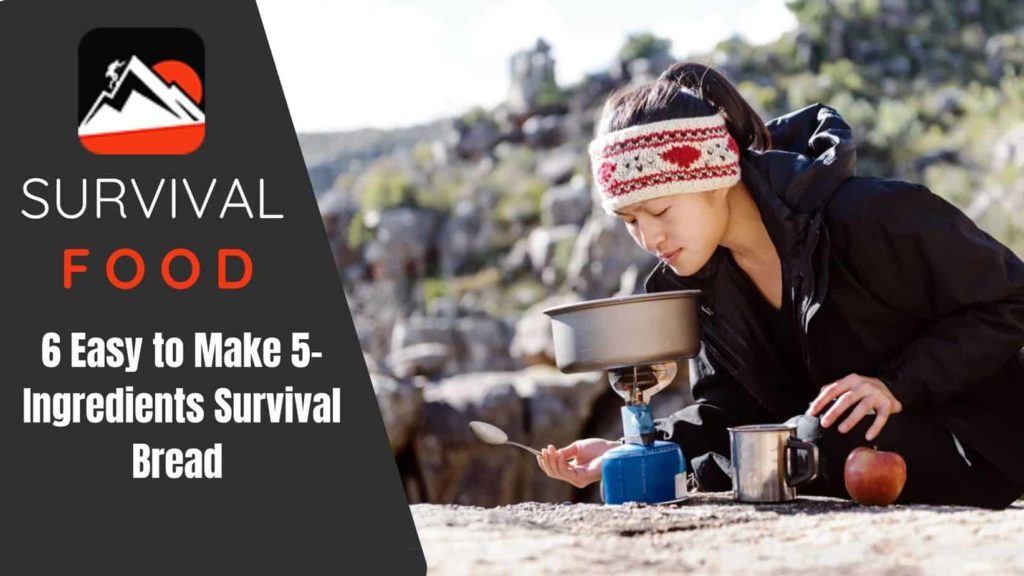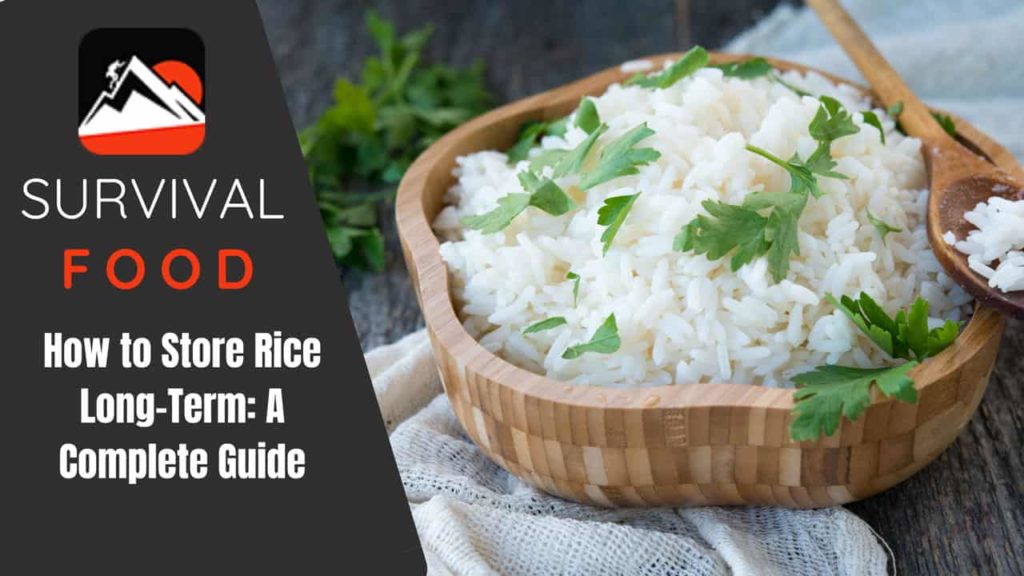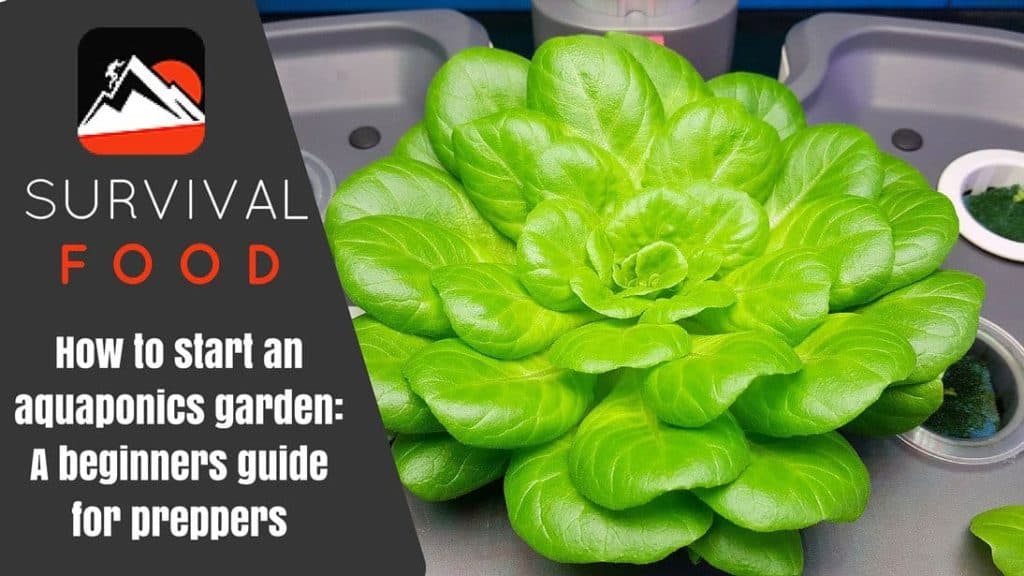Contents
If you remember the suddenness, confusion, and panic of those early days of the coronavirus pandemic, you probably want to know how to create a food stockpile that is safe, comforting, and nutritious. Stuck at home with a grim daily menu of mac and cheese, PB&Js, and the occasional wilted veggie can be more taxing than the pandemic.
Luckily, the world braved the coronavirus pandemic, which has since become a memory. This guide is for you if you are a smart survivor wondering what food to store for pandemic. Our pantry staples are an eclectic mix of frozen foods, canned soups, fun snacks, and healthier options with a long shelf life.
Best Food to Store for a Pandemic
Dried or canned beans
Beans are among the most versatile kitchen staple. Both canned beans and dried beans are high in nutritional content. They are an excellent source of dietary fiber, making them very filling. They are also rich in minerals and vitamins. Green beans and black beans are both particularly high in protein.
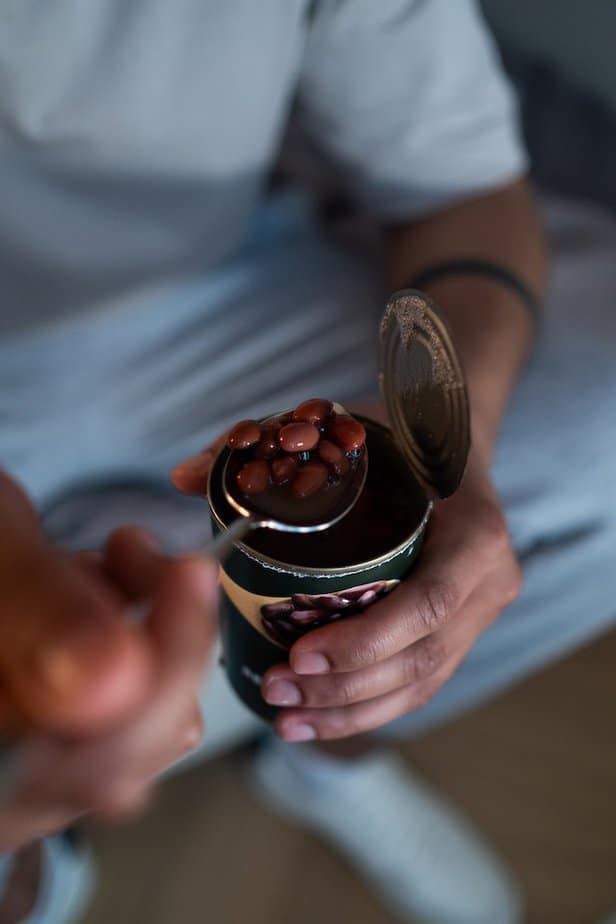
These are a few easy ways of incorporating beans into your pandemic meals:
- Top a few baked potatoes with black beans, onions, peppers, and hot sauce
- Mix a little pesto with white beans and pair them with pasta sauces of your choice or canned vegetables
- Make a three-bean salad with peppers, tomatoes, onions, and olives. Top with fruits and vegetables of your choice. (This is an excellent meal for the early days of the pandemic when fresh produce is still available.)
Make sure you check the “best by” dates before purchasing your stock pile. You want to purchase cans that have recently been manufactured. Dried beans have a longer shelf life if you keep them away from sunlight and moisture.
Rice, grains, and pasta
These are shelf stable foods that can make a full meal out of nearly everything. You can pair these pantry staples with sauteed root vegetables, grilled meats, and beans. Based on this, choose the healthier versions instead of empty carbs. Look for the word “whole” when purchasing grains. Whole grains contain minerals, fibers, and vitamins. These make great staples for a pandemic:
- Buckwheat and kasha
- Barley
- Bulgur
- Whole wheat couscous
It is best to go for brown rice and whole wheat pasta, especially if you have kids. Wild rice or brown rice is a complex carbohydrate that keeps you fuller for longer. You can also manage your cholesterol with these options. Shy away from any food that claims to be “refined” or “enriched.”
Canned fruits and vegetables
You need vegetables and fruits for a balanced diet. Fresh produce is best, but it can be difficult to get them in the middle of a pandemic. Instead, you can choose between canned or frozen fruits and vegetables. You can also stockpile dried fruits. Or, you can make your own dried fruit by either sun-drying or roasting in an oven to remove any moisture. Keep them in airtight pouches for lasting freshness.
Make sure you stay away from “heavy syrup” when purchasing canned fruits. Instead, look for something that says “in its own juice” or “light syrup.” Canned vegetables are high in sodium. You need to find something that says no-salt added or low-sodium to keep things as healthy as possible. You can try rinsing the canned fruit or vegetable before having it. This will remove any extra sodium.
Frozen fruit and veggies are great options, but they won’t hold up if you lose power. In the last pandemic, there was access to basic amenities, but when you are preparing, you need to prepare for the worst. Make sure that whatever product you purchase doesn’t have any added ingredients, such as butter, cheese, or sauce. The same flavor can become tedious quickly, especially if you have children. You should buy plain versions and doctor them the way you like.
Tuna or salmon (canned or vacuum pouched)
Canned tuna or salmon is incredibly versatile. It offers great-quality protein and healthy fats in a relatively inexpensive way. You should stock up on canned tuna and frozen salmon. Make sure the salmon is skinless and boneless. These are a few tasty ways of having your canned fish:
- Toss them over your favorite fresh foods (if available) for a quick hit of protein.
- Make a go-to tuna salad recipe with nut butters and mayo.
- Cook up salmon burgers or tuna patties and have it with canned soup. You can season it with herbs and spices for a nice kick.
- Create your own dipping sauce for tuna or salmon.
- Top a baked potato with tuna/salmon, sauteed veggies, and aged cheese.
Make sure you throw away any frozen fish or meat products if it has been in the refrigerator for more than 4 hours without power or on the shelf for more than 2 hours.
Broth and stock
Your pantry items are not complete without soup and broth – the ultimate comfort food. You can make a lot of varieties with limited ingredients in a pinch. You can make your own bone broth and store it in the freezer for up to a year. Furthermore, you should have shelf-stable broth on hand as well in case there is no power to run the freezer. There are many frozen options where broth, soup, and stock are concerned.
Peanut butter
Peanut butter is an excellent source of healthy fats and protein. However, you need to eat this in moderation. It is important that you choose the right type as well. You don’t want an overly processed version that has high levels of saturated and unsaturated fats. You need to make healthier choices for your pandemic pantry. You want peanut butter that doesn’t have a high calorie count or lots of salt. Avoid anything that contains added sugar, fat, salt, and preservatives. Instead, you need to go for something more natural.
Smart snacks
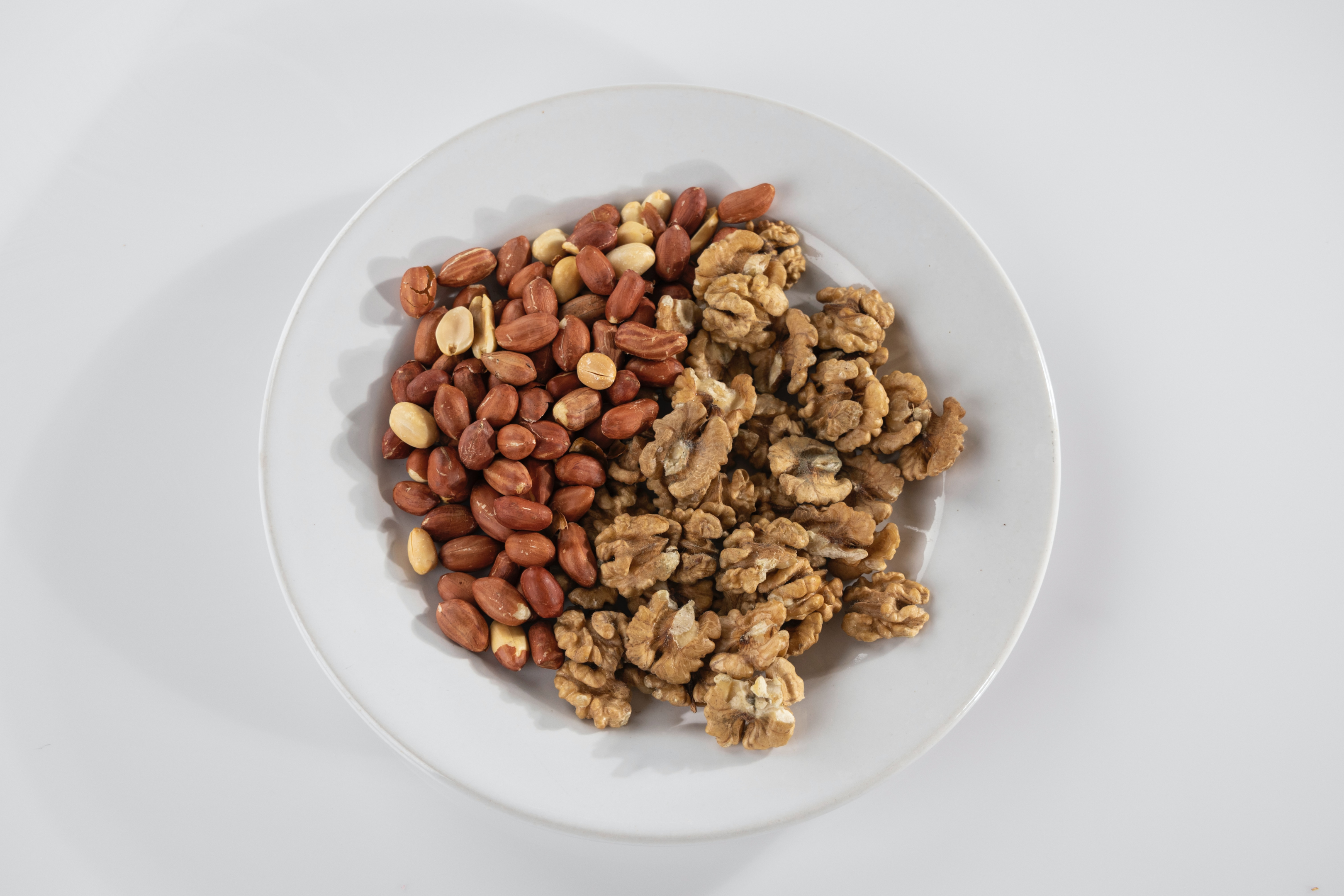
You need to revamp your routine to include healthy options if your idea of snacking includes sugary, greasy, and super-salty products. These are a few great picks for snacks:
Air-popped popcorn
Popcorn is a delicious, whole-grain, and crunchy snack. Microwave popcorn is a big NO since it is loaded with sodium, chemicals, and trans fats. Instead, purchase an inexpensive popper and popcorn kernels. You can make it tasty by adding healthy seasonings, such as black pepper, cinnamon, rosemary, garlic powder, and smoked paprika. You can also try adding a handful of dark chocolate chips to the mix.
Tuna packets
Yes, we are talking about tuna again! These are great as a quick snack. You can pair them with other canned goods, hot sauce, or herbs to kick up the flavor.
Unsalted nuts
Nuts are packed with protein, fiber, and monounsaturated fatty acids. They keep your blood sugar low and are a great choice for people with diabetes. Almonds, hazelnuts, Brazil nuts, walnuts, and pistachios go great with aged cheeses. Many people have trouble keeping their portions in check. You can serve the nuts using a 1/4 measuring cup to have a perfect serving every time. Your local grocery store may also carry single-serving packages of nuts.
Other essentials
Depending on your tastebuds, there are other things you may want to store. For instance, shelf stable milk is great for people that don’t have any dietary restrictions. You may not have access to bread, but you can always purchase shelf-stable wraps. Apples are a substantial source of vitamin c and have a long shelf life if stored right.

You may also want to consider freeze-dried coffee, clarified butter, honey, liquor, onions, garlic, potatoes, powdered milk, tea, and squash. Experts say that households should keep sports drinks handy. Ideally, you should have at least one gallon for every member. This can be used for balancing your electrolytes in case of an emergency.
Eat Safe During a Pandemic
Pro tip: Check out this helpful video from the Food and Agriculture Organization of the United Nations on healthy eating tips during a pandemic.
In sync with the WHO guidelines, here are 5 tips to eat safely during a pandemic.
Keep clean
By washing your hands, you can help prevent disease. This rule applies to cooking and eating too. You need to wash your hands before handling food. Don’t forget to sanitize surfaces and food preparation equipment.
Keep raw and cooked separate
You should separate fish and meat products from other foods. Keep separate knives and boards for raw foods to prevent any intermingling of bacteria. There are dangerous microorganisms and spores in raw food that can contaminate processed food.
Cook completely
You need to cook all foods really well. This includes meat, seafood, and vegetarian dishes. The only way to make food safe for consumption is to kill all dangerous microorganisms. If you are reheating leftovers, make sure the food is steaming hot. Pay special attention to rolled roasts, minced meat, poultry, and cheese when cooking.
Store at safe temperatures
It’s crucial to practice safety when storing food. Refrigerate all cooked and perishable food. Avoid leaving anything cooked at room temperature for long. Heat the food well before you serve it.
Use clean and safe water
Make sure the meat or produce you purchase is safe and fresh. Wash your vegetables and fruits with clean water. This is important if you are eating it raw. Even ice can be contaminated with unwanted chemicals and microorganisms.
Importance of Nutrition in a Pandemic
You need to eat nutritious food if the emergency is disease-related. This will ensure you maintain good health. High-quality foods are better since your emergency preparedness kit will have limited supply. Make sure you avoid empty calories in an emergency or disaster. Barry Swanson, professor emeritus of food science at Washington State University says that the human body depends on a balanced and normal diet with fiber and nutrients to keep functioning.
You should be more thoughtful of meeting your basic needs instead of flavors. This is not to say that you cannot have a great variety of foods and nutrients if you plan right. You need to weigh in on the type of perishable and non-perishables you can include.
Pro tip: Check out our guide on “Best Freeze Dried Food: Store these 5 to Prep for an Earthquake.” They work great for a pandemic and other types of emergency situations.
Stocking a Healthy Pantry
While creating an emergency stockpile, you need to find food that has a long shelf life. Based on this, you also need nutrition in what you eat. While you should stock up on frozen and canned foods, you also need fresh produce with a higher shelf life. For instance, you should store onions, potatoes, garlic, apples, and other similar food.
All you need is a few pantry staples combined with a little bit of creativity to create taste sensations in your own home kitchen. Make sure that whatever you eat has both fiber and protein to keep you fuller for longer periods. It will also prevent you from overeating. It is good to have a few indulgences, but you don’t want to overdo it.
You need to eat fruits and vegetables. It can be challenging to purchase fresh produce. Pertaining to this, apples and winter squashes can stay fresh for up to 3 months. This is important if you have children. Whenever possible get hold of fresh produce. If not, add canned or frozen fruits and veggies to the diet. You can use fresh vegetables to cook large batches of soup that will keep well for at least two weeks in the refrigerator.
Canned chickpeas and beans provide an abundance of nutrients. You can make homemade hummus that can be stored for a long time. Canned oily fish, such as mackerel and sardines are rich in omega 3 fatty acids, protein, and a range of vitamins. You can use these in salads, sandwiches, and pasta dishes. Canned tomatoes are a great fallback option when frozen or fresh vegetables are not available.
Don’t forget to store dried foods, such as pulses, grains, and beans. You should look for healthy options, such as couscous, quinoa, split peas, and beans for a nutritious, long-lasting, affordable, and filling meal. Shelf-stable dairy products can be used in breakfast. For instance, rolled oats can be cooked with water and milk, or spiced with yogurt, raisins, and chopped fruits.
The Final Word – Be Prepared
The last pandemic took many of us by surprise. Don’t let it happen to you again! Stay prepared by creating a stockpile of emergency food that you and your family can rely on. You need to create a balance of nutritious and healthy options mixed with tasty snacks.
While you should not count on it, but if you get ample warning, you need to quickly run to the store and pick up fresh food along with all the toilet paper you can find. These will give you a fresher alternative to the packaged food you already have.
It is important to understand that many things on this list have a shorter shelf life as compared to others. You should rotate your stockpile every few mo


